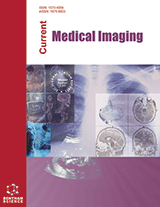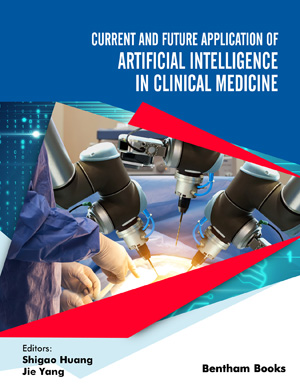[4]
Yadav DP, Rathor S. Bone fracture detection and classification using deep learning approach. International Conference on Power Electronics & IoT Applications in Renewable Energy and its Control (PARC). Mathura, India. 2020; pp. 282-5.
[7]
Ferizia U, Honigb S, Chang G. Artificial intelligence, osteoporosis and fragility fractures. Wolters Kluwer Health, Inc. 2019.
[9]
Hsieh C-I, Zheng K, Lin C. Automated bone mineral density prediction and fracture risk assessment using plain radiographs via deep learning. Nat Commun 2021.
[11]
Fathima NSM, Tamilselvi R, Parisa Beham M. A survey on osteoporosis detection methods with a focus on X-ray and dexa images. J Inst Electron Telecommun Eng 2020; 68(6): 4640-664.
[12]
Patil KA, Mahendra Prashanth KV, Ramalingaiah Dr A. A comparative study on the detection of osteoporosis using deep learning methods: A review. International Journal of Orthopaedics Sciences 2021; 7(3): 108-5.
[18]
Kajla V, Gupta A, Khatak A. Analysis of X-ray images with image processing techniques: A review. International Conference on Computing Communication and Automation. Greater Noida, India. 2018; pp. 1-4.
[19]
Guan B, Zhang G, Yao J, Wang X. Arm fracture detection in X-rays based on improved deep convolutional neural network. Comput Electr Eng 2018; 81: 106530.
[20]
Seo Kanghyen, Kim Seung Hun, Kang Seong Hyeon, Park Jongwoon, Lee Chang Lae, Lee Youngjin. The effects of total variation (TV) technique for noise reduction in radio-magnetic X-ray image: Quantitative study. J Magnet 2016; 21: 593-8.
[21]
Mahendran SK, Santhosh Baboo S. An enhanced tibia fracture detection tool using image processing and classification fusion techniques in X-ray images. Global J Comp Sci Technol 2011; 11(14): 23-8.
[22]
Kirti T, Jitendra K, Ashok S. Poisson noise reduction from X-ray images by region classification and response median filtering. Sādhanā. 2017; 42: pp. 855-63.
[23]
Zhu H, Sun W, Wu M, Guan G. Pre-processing of x-ray medical image based on improved temporal recursive self-adaptive filter. The 9th International Conference for Young Computer Scientists. Hunan, China. 2008; pp. 758-63.
[25]
Folasade Olubusola Isinkaye. Abiodun Gabriel Aluko, Olayinka Ayodele Jongbo, Segmentation of medical x-ray bone image using different image processing techniques. IJ Image, Graphics and Signal Processing 2021; 5(3): 27-40.
[26]
Zeelan Basha CMAK, Maruthi Padmaja T, Balaji GN. Automatic X-ray image classification system. In: Satapathy S, Bhateja V, Das S, Eds. Smart Computing and Informatics. Singapore: Springer 2017; vol 78.
[27]
Basha CZ, Rohini G, Jayasri AV. Enhanced and effective computerized classification of X-ray images. International Conference on Electronics and Sustainable Communication Systems. Coimbatore, India. 2020; pp. 86-91.
[28]
Anil K. An improved segmentation algorithm for X-ray images based on adaptive thresholding classification. 2019.
[29]
Hrosik RC, Tuba E, Dolicanin E, Jovanovic R. Brain image segmentation based on firefly algorithm combined with K-means clustering. Stud Inform Control 2019; 28(2): 167-76.
[30]
Peruri S, Vamsi J. Bone fracture detection using image processing. Int J Sci Dev Res 2020; 5(6): 329-4.
[31]
Sahu Barnali, Jena Shweta, Jagadev Alok Kumar. A model for comparative analysis of medical bone X-ray images using image segmentation. Int J Telemed Clin Prac 2016; 1(3): 199-208.
[32]
Zeelan Basha CMAK, Maruthi Padmaja T, Balaji GN. An effective and reliable computer automated technique for bone fracture detection. EAI Endorsed Trans Pervasive Health Technol 2020; 5(18): 162402.
[35]
Xiangbin LS, Liu S, Zhang Y. A review of deep-learning-based medical image segmentation methods. MDPI Sustainability 2021; 13(3): 1224.
[36]
Ronneberger O, Fischer P, Brox T. U-Net: Convolutional networks for biomedical image segmentation. In: Narab N, Hornegger J, Wells W, Fraagi A, Eds. Computing and Computer-assisted intervention 9351
[37]
Perry J, Nguyen T, Peter M, Perry J. Improved CT-based osteoporosis assessment with a fully automated deep learning tool. Radiol Artif Intell 2022; 4(5): e220042.
[39]
He K, Zhang X, Ren S, Sun J. Deep residual learning for image recognition. Proc IEEE Comput Soc Conf Comput Vis Pattern Recognit. Las Vegas, NV, USA. 2016; pp. 770-8.
[40]
Szegedy C, Liu W, Jia Y, et al. Going deeper with convolutions. Proceedings of the IEEE Computer Society Conference on Computer Vision and Pattern Recognition. Boston, MA, USA. 2015; pp. 1-9.
[41]
Tan M, Le QV. EfficientNet: Rethinking model scaling for convolutional neural networks.36th International Conference on Machine Learning. San Diego, CA, USA 2019; pp. 9-15.
[42]
Gao L, Jiao T, Feng Q, Wang W. Application of artificial intelligence in diagnosis of osteoporosis using medical images: A systematic review and meta-analysis. Osteoporosis International 2021; 32(7): 1279-86.
[51]
Guan B, Zhang G, Yao J. Arm fracture detection in X-rays based on improved deep convolutional neural network. Comput Electr Eng 2020; 81: 106530.
[54]
Cai Z, Vasconcelos N. Cascade R-CNN: Delving into high quality object detection. IEEE/CVF conf comput vis pattern recogni. Salt Lake City, UT, USA. 2018; pp. 6154-62.
[58]
Anam M, Ponnusamy MH. Osteoporosis prediction in trabecular bone using machine learning: A review. Comput Mater Continua 2021; 67(1): 89-105.
[60]
Jia W, Xiangjian H, Kennedy P. “Deep Learning Techniques for Medical Image Segmentation: Achievements and Challenges”. J Digit Imaging 2019.
[65]
Aasis Unnanuntana MD, Brian P. The assessment of fracture risk. J Bone Jt Surg 2010; 92(3): 743-53.
[66]
Saranya A, Kottilingam Dr K. A survey on bone fracture identification techniques using quantitative and learning based algorithms. 2021 International Conference on Artificial Intelligence and Smart Systems (ICAIS). Coimbatore, India. 2021; pp. 241-8.
[68]
Du Getao, Cao Xu, Liang Jimin, Chen Xueli. Medical image segmentation based on U-net: A review. J Imag Sci Technol 2020. Preprint
[70]
Sheny W, Xuy W, Zhang H. Automatic segmentation of the femur and tibia bones from X-ray images based on pure dilated residual U-net. Inverse Probl Imaging (Springfield) 2021; 15(6): 1333-346.
[71]
Chebli A, Djebbar A, Marouani HF. Semi-supervised learning for medical application: A survey. Proceedings of the 2018 International Conference on Applied Smart Systems. Medea, Algeria. 2019; pp. 1-9.













